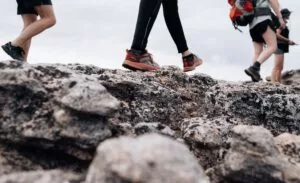
The Best Hiking Boots and Trail Shoes in Canada
Hitting the trails can be one of the best ways to get exercise and enjoy the outdoors. But blistered, swelling and sore feet can make your hikes much less enjoyable. Getting footwear that suits your feet and the terrain of the hikes you go on will reduce the painful effects of walking kilometers on the trail, letting you enjoy your surroundings. Whether you are looking for the classic hiking boot style, or the lighter and more flexible trail runner shoe, we have some of the best footwear for hiking in Canada, including the top-rated hiking boots and trail shoes.
Our top picks
What to look for in hiking footwear
Ankle height or cut – The length of your ankle gives a certain degree of support for your ankles, which may be really important. Uphill pushes, downhill jaunts, and scrambles can all take a lot out on your ankles, and so the support from mid- or high- cut ankles on a pair of hiking boots can help support that load. This is one of the main features that define the difference between hiking boots and shoes.
What are the disadvantages of higher ankle heights? Flexibility, and also the fact that having to pull on boots each time you got to leave your tent in the night can get super annoying.
Cushioning and comfort – The cushioning that is included in any boot or shoe can be one of the most defining aspects of footwear, and by extension, your walks in said footwear.
Cushioning exists primarily in the midsole or any liners that the boot or shoe comes with. Extra cushioning is available in certain types of shoes but might not be necessary. If you are particular about how your shoe or boot feels, it really pays to try it on first.
Durability – Ideally, you want anything you buy to last you a long time. For long, difficult trails that might take several days to complete, the last thing you want to deal with is failure of one of your key components. But even casual hikers and walkers want to get good use out of their footwear. Higher quality components and construction will see your boots and shoes last longer. Throughout our reviews, we looked into the overall durability of various footwear, considering the more durable footwear for the list, and noting if any of our preferred pairs of shoes had any components with questionable durability.
Traction – The tread of your shoes provide traction that allow you to traverse the terrain. Hiking boots have a very thick treads that provide excellent traction and protect from sharp rocks and branches. Factors that will influence the degree of traction provided include the stiffness of the tread, the stickiness of the rubber compound, the thickness of the lugs and the distance between lugs. Traction is a major consideration of traction in boots and trail shoes for locales with harder terrain. If you rarely travel off the beaten path, prioritize comfort.
Heel-to-Toe drop – The difference between the height of the heel versus the height of the toe can inform comfort and stability in your boots. With hiking boots and trail runners alike, the heel-to-toe drop can be an impactful consideration. Think about how you walk: If you put your heel down first, you might consider a higher shoe drop between ten and twelve millimeters. Higher drop shoes put more stress on your knees and hips, but are easier on your foot, ankle and calf. Toe first hikers should consider the opposite and look for a shoe or boot with a low drop, or zero drop. The less drop, the more impact force applied to your lower leg and foot and less on your knees or hips.
Water resistance – Dry feet are comfortable feet. While most typically will not need to cross streams or trek through rain storms on a regular basis, through-hikers and backpackers need to make this consideration. Ideally, whether you get a boot or shoe, it should dry decently fast. However, for more advanced hikers, seriously consider a boot with strong water-proofing. Many boots are available with some sort of waterproof liner or membrane, many of which are made from the breathable material GORE-TEX. These boots should provide enough water protection to pass through puddles and streams completely dry, as they typically have what is called a “flood height” of approximately six inches. Of course, traversing through water with depths beyond the flood height will likely lead to wet feet unless you are using gaiters.
Breathability and ventilation – How well your foot can “breathe” is an important consideration. When footwear is not well ventilated or breathable, then any moisture inside your boots (from sweating, etc.) is trapped, and can cause blisters and uncomfy feet. The breathability and ventilation also can inform how fast the shoe dries.
Weight – Footwear has a weight too, which adds up when you take thousands of steps throughout the day. Lighter shoes are in a way more efficient but are counterbalanced by providing lesser foot protection. If you are the type who wants lighter footwear, look to trail runners, or hiking shoes. For rocky and hard to traverse terrain though, boots are worth their weight.
Price – Obviously, price is a consideration everyone makes at first before hitting “add to cart”. However, think beyond the upfront savings. Gear that costs more can last longer than cheap gear, but not always. Think about how often you plan on hiking in your new boots and shoes and invest an appropriate amount of money – you do not want to buy shoes next summer too, most likely.
The best hiking boot
La Sportiva Nucleo High II GTX
The La Sportiva Nucleo High II GTX combines modern innovation with a classic hiking boot design. These boots are impressive all-rounders, with strong protection from the elements, comfort, and breathability in a lightweight package.
The La Sportiva Nucleo High II GTX offers decent comfort but lacks the cushioning for it to be a true top-tier comfortable boot. The Nucleo High II features a compression-molded EVA midsole inside, and a thick protective outsole on the outside, which combines for a protective boot. A 3D Flex ankle hinge for enhanced mobility in the ankle without losing support. The fit inside the boot does seem to be on the narrower side, so people with wide feet will not get the same value from this boot.
The Nucleo High II features a Nuback leather upper that lends the classic look of these boots. Much of the rest of the boot’s exterior, La Sportiva’s Nano-Cell technology provides a protective mesh that improves the breathability of the boot. The Vibram Nano XS-Trek outsole is protective, but not overly bulky, with deep tread to improve traction on terrain of most kinds. A unique aspect of these boot is the “impact braking system” – an angle on the heel of the outsole, which can improve your traction on tricky downhill trails by lifting your toes up and pushing your heel down. With a heel-to-toe drop of 10mm, this boot is near the high end of the most common toe-drops in hiking boots.
One of the strong points of the La Sportiva Nucleo High II GTX is the waterproofing, utilizing Gore-Tex Suyrround lining inside. With 6.75 inches of flood height, the La Sportiva Nucleo offers some of the most robust and dry water protection of all boots we have covered.
Overall, there is a lot of positives people who bought these shoes shared. Users who brought these boots on treks with them found them comfortable, stable, and highly waterproof, which combined for a great experience on your foot. There are a few flaws worth mentioning, one being that the shoelace loops cause the shoelaces to deteriorate quickly. Also, these boots are best suited for people who won’t mind the narrow boot. Overall, this boot’s performance makes us highly recommend this boot.
Pros
- Very comfortable.
- Strong support.
- Excellent waterproofing with almost 7 inches of flood height.
Cons
- Users complained about frequently of needing to replace the laces.
- Narrow foot.
The best boots for tough terrain
Salomon Quest 4 Gore-Tex
Bulky, heavy, and expensive – The Salomon Quest 4 Gore-Tex is the gold standard for high quality hiking boots. These boots offer all the attributes you need for those more demanding trails and destinations, with stability, durability, protection from water and comfort in large quantities.
The Salomon Quest 4 Gore-Tex is designed with support in mind. A molded OrthoLite insole provides strong cushioning to the boot. The boot features improved stability from the new ADV-C 4D chassis inside, providing extra heel support and enhanced foot control. Salomon’s SensiFit system holds your foot perfectly from the midsole to the laces, ensuring a glove-like fit. A reduction in the number of interior seams reduce friction inside of the book. Putting your foot inside this boot proves to be comfortable, due to the attention to detail in both the support and cushioning. Users found the boot comfortable enough to use right out of the box.
The mid-cut of these boots improves the stability. The padded cuff hugs to your ankle, improving rigidity when the boots are tied up. The exterior of this boot is rugged and durable, made from full-grain Nubuck leather. The outsole of the boot is thick, made from Salomon’s signature Contagrip TA rubber compound. With deep lugs across the bottom of the boot, the Salomon Quest 4 provides the traction you need when the trail gets tough.
These boots are on the heavier side, despite Salomon shaving 0.4 lbs off this version of the boot. This extra weight is a natural result of the attention to detail Salomon has put into the support and cushioning of the boot.
The Quest 4 offers an exceptional waterproof experience, which is on the higher end of all boots we have covered. GORE-TEX membrane inside keeps your feet dry, which combined with a gusseted tongue and water-repellent treatment keeps your feet noticeably drier than other boots. The six inches of flood height is overall standard, but you will not see leaks before the water surpasses the height of the boots. Keep in mind that a common sacrifice for water protection is breathability, and these boots are not any different in this regard – these things can get warm and sweaty inside.
Overall, users found these boots both rugged and comfortable. While the changes made from the X Ultra 3 and other previous versions might not make all the long-time users happy, overall, these boots were a popular pick between outdoor publications and hikers alike.
Pros
- Rugged build quality.
- Most users found these supportive and comfortable.
- Excellent water protection.
Cons
- Not the most breathable boot.
Most comfortable hiking boot
Keen Ridge Flex Mid WP
Comfortable, easy to walk in, and no breaking-in necessary – the Keen Ridge Flex Mid WP feels great to wear. While harder trails are not ideal for the Keen Ridge Flex, if you want strong support and impressive water protection, these boots are a great choice.
Keen boots are synonymous with comfort to many hikers. The Keen Ridge Flex includes many features that improve comfort and stability when on the trail, starting up from compression-molded EVA midsole with improved cushioning. The “Heel-capture” system add stability when walking, as does the stability shank in the ankle.
The outside of these shoes also shows a strong commitment to comfort, although there are some concerns over durability. Treated waterproof leather that is resistant to wear. The Keen.Bellows Flex area between the toe and the laces on the other hand has some long term durability concerns, but does have it’s doubters, due to it’s rubber construction.
The bottom of the boots, with their Keen.All Terrain traction, gives good traction in dry conditions, but becomes less ideal wet or muddy terrain, as the lugs are closely spaced and can be loaded with debris when hiking through mud or muck.
The Keen Ridge Flex offers strong water protection with Keen.Dry, an in-house designed waterproof membrane that keeps water out while still being breathable. Up to certain heights of water will be impervious to wetness seeping inside.
Overall, these boots feel good to wear. Out of the store, they should fit well, feel appropriately cushioned, and give your foot the support it needs when hiking. However, this boot does lack some traction for it to be in the upper strata of hiking boots.
Pros
- Excellent stability.
- Strong water protection.
- Very comfortable.
Cons
- Not as reliable in wet conditions.
The best value hiking boots
Merrell Moab 2 Mid Waterproof
Merrell is a top-tier brand when it comes to hiking shoes and boots. The Merrell Moab 2 Mid Waterproof is an impressively comfortable mid-ankle boot that is great for day-hikes and well-traveled trails.
The Merrell Moab is available in a variety of models, with this version offering a mid-cut ankle and waterproof protection making it a strong choice for a variety of terrain. Out of the box, the Merrell Moab is comfortable. The Kinetic Fit™ contoured footbed with reinforced heel and a lightweight EVA foam midsole combine for a supported comfort underfoot. An air cushion in the heel provides shock-absorption and stability.
The outside of the shoe also well-designed. The suede leather exterior is durable (although is susceptible to aesthetic damage). The laces are uniform and allow for quick lacing and unlacing. On the bottom of the shoe, the Merrell’s Vibram TC5+ outsole technology, the sole of these boots provide grip and stability. The angle of the boot is designed to be more angled on the heal, improving traction and bracing when heading down the mountain.
This version of the Merrell Moab features waterproof protection that while somewhat limited, is still impressive. Featuring a Gore-Tex membrane that is water-resistant while still breathable. A bellows tongue helps prevent water and debris entering from the top. These features can mean your feet are dry, even after passing thought streams. But despite these features, this boot has a lower flood level than some other boots, so they aren’t protective against deeper water without gaiters. Even with the Gore-Tex liner, breathability is not so ideal and you sweating in these boots is likely
Overall, users really liked these boots. They are comfortable, durable, and well-suited for non-extreme trails. They are not the most lightweight of boots, which might deter some, as the lighter the footwear the less work that goes into traversing a mountain. One other flaw that is worth mentioning is that these shoes are not very breathable, so these shoes may not ideal for all uses.
Pros
- Supportive, comfortable feel.
- Quick lacing and unlacing system.
- Great for steep, mountainous trails.
Cons
- Not as reliable water protection as some other boots.
Most durable hiking boot
Oboz Bridger Mid WP
Tough yet comfortable, the Oboz Bridger Mid Waterproof is a strong boot that can handle what you throw at it. While you might want to think ahead and break these boots in before taking them out with you on the trails, these boots offer the support and durability you need in hiking boots.
The Oboz Bridger is comfortably cushioned with a reliable fit. The inside of the boot is lined with a molded O-FIT insole which matches the contours of your foot and improves the fit and feel of these boots. The midsole features a TPU reinforced chassis and nylon shank that protects the underside of the foot without reducing movement, and EVA cushioning inside.
The upper of the boots are constructed from a waterproof Nubuck leather. The tread is constructed from Oboz’s Granite Peak material, built to be protective and durable. The thread is substantially thick, with large, compact lugs that don’t shed debris quickly, so they unfortunately collect mud.
Featuring Oboz’s own signature B-Dry membrane, the Bridger provides strong protection from water, making it a decent choice for rough weather conditions or trails that involve stream-crossing. However, the B-Dry waterproof membrane reduces breathability, running warm and not being particularly breathable. If sweaty or blistered feet are something you deal with, this is an important aspect to consider.
User found these boots stable and supportive, but not as light or flexible as other boots, and as a result, these boots feel slower and heavier than other boots on this list.
Pros
- High-performing durability.
- Offers strong support.
- Well protected.
Cons
- Requires breaking in.
- Feels slower and bulkier than some other boots.
Best classic hiking boot
Lowa Renegade GTX Mid
With its burly build and classic brown-leather look, the Lowa Renegade GTX Mid screams hiking boot by just looking at it. If you want something with durability and sturdiness, we highly suggest you check out the Renegade.
The Lowa Renegade includes a felt and foam insole that provides a comfortable fit out of the box. With a medium ankle cuff, and laces that run all along the length of the boot, these boots are supportive. A full-length nylon shank adds protection in rough terrain. This shank, combined with the snug heel fit, keeping your foot in place in the shoe, boosting stability.
The exterior of these boots is almost entirely made from a treated Nubuck leather, which add exceptional durability to the boots, as well as a classic look. The tailored leather results in being more form fitting than other leather boots. Strong toe caps add additional protection.
The Renegade GTX features a grippy Vibram sole, with 4 mm directional lugs lining the bottom of the boot, and side lugs that jut out from the sides of the sole. The impressive lugs make up for the not-so-sticky sole, making easy work of terrain that is wet or dry; steep or flat; smooth or rocky. The sole of the Renegade has an upwards curved camber making push-off easier with each step. The one area these boots may struggle with is during scrambling terrain.
All-leather boots with some sort of water treatment do best in water, and the Renegade GTX is no different. With a waterproof Gore-Tex lining, these boots have a strong waterproofing, with six inches of flood height. While breathability is not a strong point, it is not a weakness either, since the leather is thin and the interior of the boot does not hold onto moisture.
Overall, users found these boots supportive, comfortable, and protective. They provide an expected amount of bulk due to their predominantly leather construction but are not overly heavy. The strong waterproofing is another feature to consider buying these boots for. However, there were some concerns with durability: the stitching near the toe box can wear out, and the midsole can sometime separate due to hydrolysis. If you can take care of these boots, they will be worth it. But if taking care of your footwear is of lesser priority, then maybe look elsewhere.
Pros
- This boot offers strong support and stability.
- Waterproof with six inches of flood height
- Full leather construction without overly bulky height.
Cons
- Stitching on the toe box is a weak point.
- Sole sometimes separated due to hydrolysis.
The best trail shoes in Canada
LA Sportiva Bushido II
For trail runners, the La Sportiva Bushido is a strong pick. These shoes offer an excellent balance of sensitive control and rugged protection, perfect for performance on difficult trails.
Before we talk about the benefits of these shoes, we need to preface that these shoes have a narrow fit. This is designed as such to improve the position of your foot, keeping your heel in place. Unfortunately, this eliminates the La Sportiva Bushido for wide-footed trail runners. The minimal design of the Bushido works excellently well in providing a feel for the terrain without sacrificing foot protection
The exterior of these shoes is rugged, made from a breathable mesh with TPU reinforcements around the toe box. The sticky rubber outsole of the shoe is made from FriXion XT Groove2 rubber, with lugs that are not the deepest but still prove effective. Whatever the terrain you traverse, these shoes can handle the terrain. There is no waterproofness of any kind, and some users found these shoes not protective against mud making its way into the shoes. But they dry fast, which is some consolation.
Overall, users thought these were a great trail running shoe. For runners with narrow feet, these shoes fit well and have great performance on trail conditions of most kinds. Runners complimented the stability on all types of terrain, the natural feel of these shoes, and their fast-drying properties. There were some concerns about the breathability of this shoe, but overall users seemed very happy with the quality of the Bushido 2.
Pros
- Strong performance in all types of conditions, even wet.
- Sensitive to the feel of the ground beneath.
- Supportive.
Cons
- Narrow fit will not be ideal for all users
Best runners for trail use
La Sportiva Karacal
The La Sportiva Karacal is just another La Sportiva shoe or boot that offers excellent comfort or performance for trail use. The Karacal offers exceptional cushioning, for supportive, comfortable treks on any terrain.
For starters, unlike some of La Sportiva’s other popular trail runners, the Karacal features a more “high volume fit” with a wider toe-box, making this shoe available for more runners than their narrower counterparts (note they still fit on the smaller side). Even with a 7mm toe drop, the forefoot has 22mm of foam in the outersole, combining the slant of a toe-drop shoe with a sensitive yet protected sole
With that aforementioned toe drop and the stack height of 29mm in the heel, the stability of this shoe might be in question. But users found this not so. Several features included, like the Ortholite insole with high arches and laces with eyelets all the way up the front help you secure your feet.
The Karacal is one of the better protected trail runners available in Canada. The rock guard that runs through the entirety of the sole and the rigid toe bumper on the front are two of the inclusions designed to keep your feet going. The Karacal features FriXion AT 2.0 rubber, with 3mm lugs that are thick enough to grab onto the train while still being smooth on flatter surfaces.
The shoes are made to be lightweight and durable. The upper is made from a large-pore mesh that promotes breathability, but overall these shoes are not the most breathable trail runner. Unfortunately, the extra padding in the tongue of the shoe is partially responsible for the subpar breathability somewhat while elongating drying times. These shoes are not the best to traverse any kind of trail, and if river crossing is within your comfort zone and travel itinerary, then maybe consider another shoe.
Overall, users find these trail runners comfortable and protective, with a decent degree of sensitivity. There are some things users critiques the shoes for, like unintuitive sizing that runs on the smaller side of things. We suggest trying a size up if you cannot actually try these shoes on first. The other main critique is the breathability of this shoe, which is at odds with the cushioning. If you want a sensitive trail runner, this is not it. But if you want a comfortable trail runner that does well in most terrains, the Karacal is a fine choice.
Pros
- Excellent cushioning makes for a truly comfortable trail runner.
- Well protected from rocks and roots.
- Strong traction.
Cons
- Sizing runs small.
- Not breathable enough for some uses.
The best well-rounded trail shoe
Brooks Cascadia 16
The Brooks Cascadia was designed with strong trail running aspirations. Now in its 16th iteration, the Brooks Cascadia remains one of the best shoes for hard core trail runners. With improved stability and comfort, the Brooks Cascadia is a strong choice for your next trek.
The Brooks Cascadia 16 feel rugged yet not heavy. Constructed with a breathable mesh upper and a bulky sole, these shoes offer a balance of finesse and protection. While the Cascadia 16 is 20% lighter than the previous model, it still is not among the lighter trail shoes available.
Featuring Brooks’ DNA LOFT v2 midsole, the thicker yet softer midsole improves the comfort of these shoes while out on trail. Brooks’ TrailTack rubber outsole provides strong traction on dry and wet surfaces alike. The ballistic rock shield in each shoe protects from the more painful parts of the trail. There is a trade off for sensitivity, though – you will not feel as much of the trail with these shoes. The 8mm heel-to-toe fits in the sweet spot that works for all experience levels well.
Most users were big fans of the Brooks Cascadia 16. The comfort, stability, and protection were all listed as high points for the users who liked them. However, some users did not find these shoes as comfortable as previous iterations of the Cascadia shoe – some not liking the wider footshape of these shoes, some finding these shoes caused blisters. Other users criticized the lack of sensitivity of these shoes. These two reasons make us highly recommend trying these shoes on before purchasing.
Pros
- Very protective.
- Strong traction.
Cons
- The fit of these shoes are not ideal for all runners.
Trail runners with a best traction
Salomon Speedcross 5
If you push your trail running to difficult trails in the mountains or other kinds of tough terrain, the Salomon Speedcross 5 might be the trail shoe for you. One of the most popular shoes for trail running, these shoes are made to improve your pace on any terrain.
Firstly, this iteration of the Speedcross features a widened forefoot and toe-box, letting those users without narrow feet the option to try the Speedcross. With a stack height of 30mm in the heel, and a 10mm toe drop, these shoes balance protection underneath with the trail feel that the 20mm of sole in the front will let you feel. The Sensifit upper and quick-lace system let you snugly secure the shoe to your feet, improving stability, but of course having a 10mm toe drop means stability is not the strongest point of these shoes, and downhill sections need mindfulness.
Let’s talk about the traction of the Speedcross 5 next. It is impeccable. The Speedcross’ signature is their 6mm deep triangular lugs, which provide excellent traction in most conditions, with lugs that can shed mud and debris quickly. The outersole is made from Contragrip TA rubber, with improved stickiness from the last iteration of the Speedcross. The result is a super grippy shoe that sticks to rocky terrain and anything else a mountain may throw at it.
Overall, users seemed extremely impressed with the strong traction these shoes provided. Traversing terrains of all kinds, from well-worn trails to scrambles, are a cinch in these shoes. Users are happier with the wider shape of the Speedcross 5, which fits comfortably on most feet. Not all users will want shoes with larger toe-drop, but these shoes manage to balance sensitivity, protection, and traction very well.
Pros
- Best traction among trail runners.
- Balances sensitivity and protection.
Cons
- Not the most stable on downward descents.
Best budget trail runner
HOKA Challenger ATR 6
The HOKA Challenger ATR 6 are some truly comfortable shoes with the versatility to crossover from urban paths to nature’s winding trails. With maximal cushioning, these all-terrain runners are well worth considering for all kinds of runners who want a comfortable experience.
This version of the HOKA Challenger keeps what worked and updated what could work better. These changes included updating the design of the upper and widening the midsole under the heel. With a 30mm stack height and a 5mm toe drop, these shoes offer strong comfort. Without being overly heavy or bulky, the HOKA Challenger ATR 6 feature plenty of cushioning throughout, with a symmetrical cushioned bed for your feet. The Challenger ATF 6 uses compression molded EVA foam midsole to fit to your feet and add sturdiness.
The traction of the HOKA Challenger ATR 6 is solid, but not exactly a strong point. Compared to other trail runners, less of the sole is covered with lugs, and some of the bottom of the foot is exposed foam. The lugs on the bottom of these shoes are 4mm deep and rectangular, which proves lacking for difficult terrain, but performs decently overall. The Challenger ATF 6 features HOKA’s own rubber compound is reasonably sticky, and good for dry conditions.
Overall, users find this a very comfortable shoe (minus some complaints about how the tongue sits) that handles most terrains quite well. Many users were very happy about going on walks without worrying about hurt feet. While these shoes are not the best choice for technical trails and tough terrain, for a comfortable, all-rounder trail shoe, the Hoka Challenger definitely contends with some of the best
Pros
- Extremely comfortable, well-cushioned shoe.
- Strong stability.
- Lightweight.
Cons
- Traction is lacking.
- Not sensitive.
The most comfortable trail runners
Altra Lone Peak 6
If you are looking for comfort in your next trail runner, consider the Altra Lone Peak 6. This zero-drop shoe offers excellent comfort and sensitivity.
This iteration of the Lone Peak doesn’t fix what isn’t broken, only making slight adjustments. This version of the Lone Peak includes an improved lacing system and some weight shaved off of the upper of the shoe.
The midsole is constructed 25mm thick Altra’s Alter EGO EVA foam without tapering, providing consistent protection throughout. The result is a sensitive, minimalistic trail shoe that offers lots of control to runners. However, the padding of the shoe is not ideal for longer trail runs but proves comfortable for shorter distances. A lack of any kind of flexional or torsional rigidity would make me hesitate to take these up a mountain as well, as this lack of rigidity would likely impact the stability necessary when the going gets tough or the downhills sections get steep.
The Lone Peak’s TrailClaw lug design offers this shoe decent traction, that uses canted lugs on the outsole to boost traction. Combined with the soft rubber of their MaxTrac outsole, and the Altra Lone Peak 6 has strong traction on most soft or hard surfaces.
The upper of these shoes are made from a tightly woven mesh that keeps out sand and pebbles and protects from punctures, made with a thin yet strong TPU film covering. Despite the protection available and the thicker polyurethane reinforcements, these shoes come out exceptionally light, under 20 oz per pair
Overall, the Altra Lone Peak has carved out a respectable niche in the world of trail shoes for its cushioned take on a minimalistic trail runner. Out of the box, users found these shoes very comfortable, very sensitive, and great for walking distances shorter than long day hikes. If you are more of a fan of shoes with zero-drop, definitely consider these.
Pros
- Offer decent protection in a zero-drop shoe.
- Balances comfort and weight well.
- Solid traction.
Cons
- Not very supportive.
Our methodology
When looking for shoes or boots for hiking or long distance use, you need something that feels good on your feet. What feels good on your feet is however subjective, and so instead we tried to use language that would help you estimate if the shoe would work for you or not.
Things you should consider include your foot size and width, your use, and your budget. Once you have an understanding of what you are looking for, consider the support, cushioning, stability and sensitivity of the shoe or boot. These facets provide different things to the experience on the trail and can be a trade-off for another factor – often cushioning in the shoe trades off with the sensitivity the shoe provides.
We spent over 25 hours researching different shoe brands for the creation of this article. We meticulously reviewed user reviews, conferred with other professional reviews, and read through the specs of each boot or shoe reviewed. We only considered shoes with an average online score of 4 stars or higher to ensure our readers get the best footwear for them.
Frequently asked questions regarding trail shoes and hiking boots
Should I choose hiking boots or trail shoes?
Trail shoes and hiking boots provide the same basic function (protecting your feet from the trail underneath) but the experience can be vastly different between the two types of footwear. Different people and trails might call for one over the other, and knowing what options exist can help you make the right choice.
Hiking boots are rugged footwear, designed with bulky soles for improved traction. Hiking boots are typically a mid cut coming up somewhere above your ankle to give better support. Hiking boots are usually made from rigid, sturdy materials, including leather or synthetic materials and so breaking in your boots is a major consideration you should commit to before bringing them out on the trail.
Trail shoes can include both hiking shoes and trail runners. Hiking shoes are rugged shoes with reinforced soles with strong traction, similar to hiking boots. Where the difference lies is the flexibility and out-of-the-box comfort. With a lower cut, you have more ankle freedom – which may or not be beneficial on certain trails. Trail runners are less durable, lightweight shoes designed for, well, trail running. They offer more protection and support over traditional running shoes, but do not have the traction or durability of hiking shoes.
Consider not only the trail you are hiking on, but the camping too – the main reason I abandoned boots in favor of hiking shoes was because I didn’t want to lace up every time I needed to go to the outhouse in the night.
How should hiking boots fit? How should trail shoes fit?
According to the experts at REI, “hiking boots should fit snug everywhere, tight nowhere and offer room to wiggle your toes”. It is recommended that you try on your boots before buying and consider trying them on at the end of the day, when your feet might be swollen from walking throughout the day. Try your boots on with any thing you might wear with them, including orthotics if you wear them, and the socks you would wear with your boots. After choosing a pair that suit you, we recommend wearing them around the house to break them in and figure out if there will be any issues wearing the boots long term.
We think these same principles apply to trail shoes too.
How to prevent blisters in hiking boots?
Blisters are typically a result of some combination of pressure, heat, and moisture that may occur if your boots or socks are not fitting properly.
Ensure your boots fit well and are tied up appropriately. You can wear thin sock liners under your hiking socks to reduce friction between sock and foot. If a spot is rubbing, you can also cover them with a blister band aid or blister padding. If a blister does form, take pre-emptive care, DO NOT POP IT WHILE YOU ARE ON A TRAIL, and treat it like any wound if it does pop.
How to break in hiking boots?
If you have a new pair of rigid boots, you should think ahead about breaking them in instead of trying to do so on trail. Rigid boots prove uncomfortable and will be a nightmare if they are not broken in before putting too many kilometers in them.
First, start off by wearing the boots around the house with any socks or insoles you will pair with them with. Next, take them out to the neighbourhood. Getting actual walking in is imperative to breaking in hiking boots. Finally, take them out on a day hike or two, so you can do some serious breaking in on trails.
Where to buy hiking boots? Where to buy trail shoes?
Both hiking boots and trail shoes are most often found at outdoors stores. We suggest looking at stores like MEC and Atmosphere before looking at Canadian Tire or Walmart – the difference between good and bad hiking footwear is huge.
How to clean hiking boots?
Cleaning your hiking boots starts with maintaining their cleanliness while out on the trail. The most you should commit to is drying wet boots after a wet day if possible, extending the life of the materials and preventing odor build-up.
To clean your boots after your hike, you will need a brush (an old toothbrush should work) and either a boot cleaner product or a solution of dish-soap and water.
Remove your laces and use the brush and soap solution to clean any soiled areas. Rinse with water and dry thoroughly. Never put boots in a washing machine.
How to lace hiking boots?
All the way to the top. This is important for boots as otherwise the ankle support would not be as strong. However, the traditional bunny loop can be supplanted by other lace-tying methods designed for improved comfort on the trails.
Read more

The Best Camping Stoves in Canada
If you want to take your camp cooking to the next level, then a camping stove is the appliance for you.
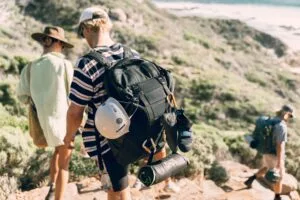
The Best Hiking Backpacks in Canada
Hiking backpacks are an important thing to have for a hike. That’s why we created this buying guide.
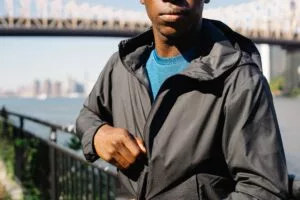
The Best Windbreakers in Canada
Windbreakers are the perfect jacket to wear for your outdoor adventurers.
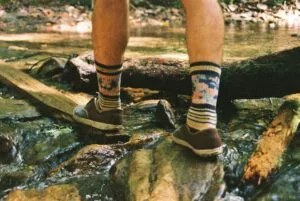
The Best Hiking Socks in Canada
A good pair of hiking socks will keep your feet nice and comfortable during any season.
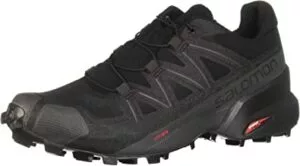
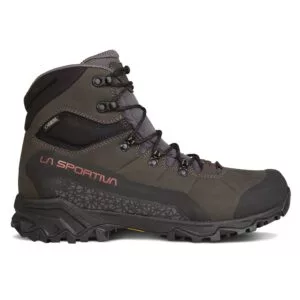
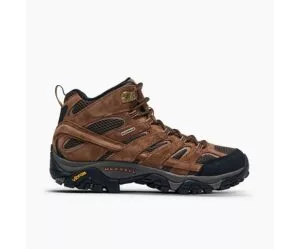
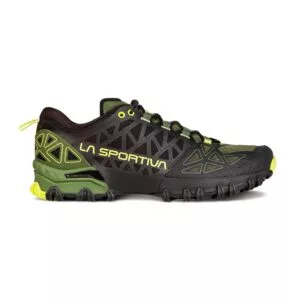
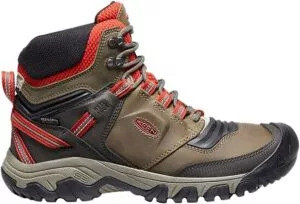
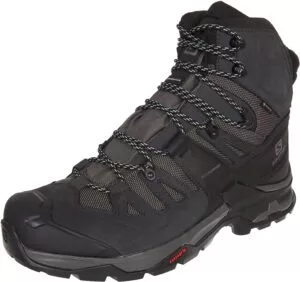
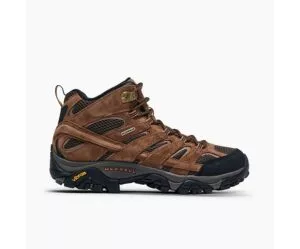

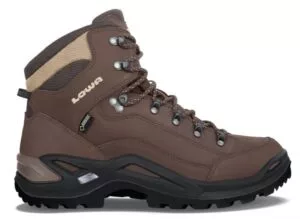
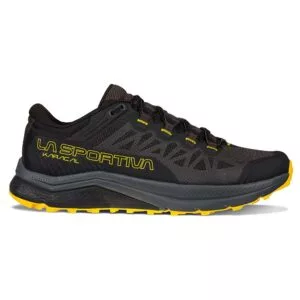
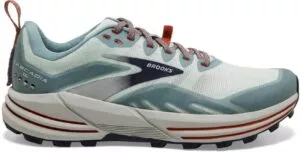
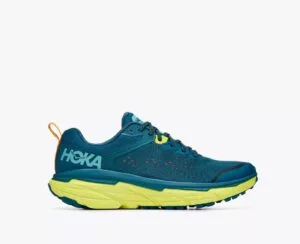
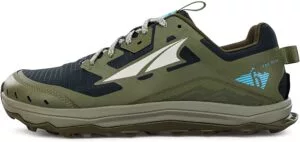
best off counter seasonal allergy allergy over the counter drugs does benadryl make you sweat